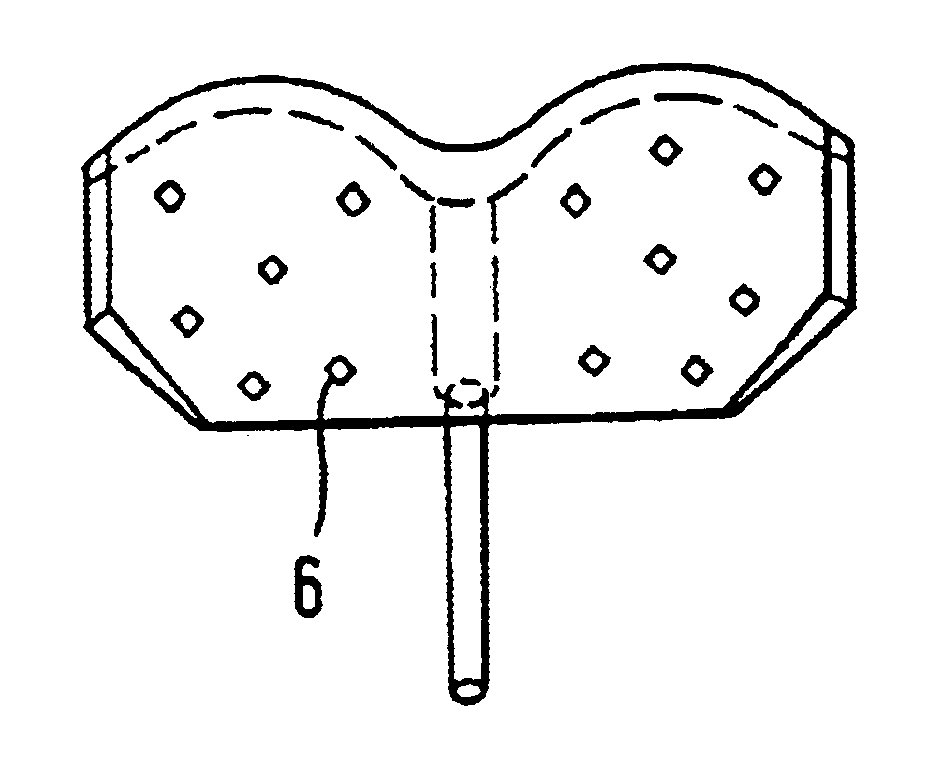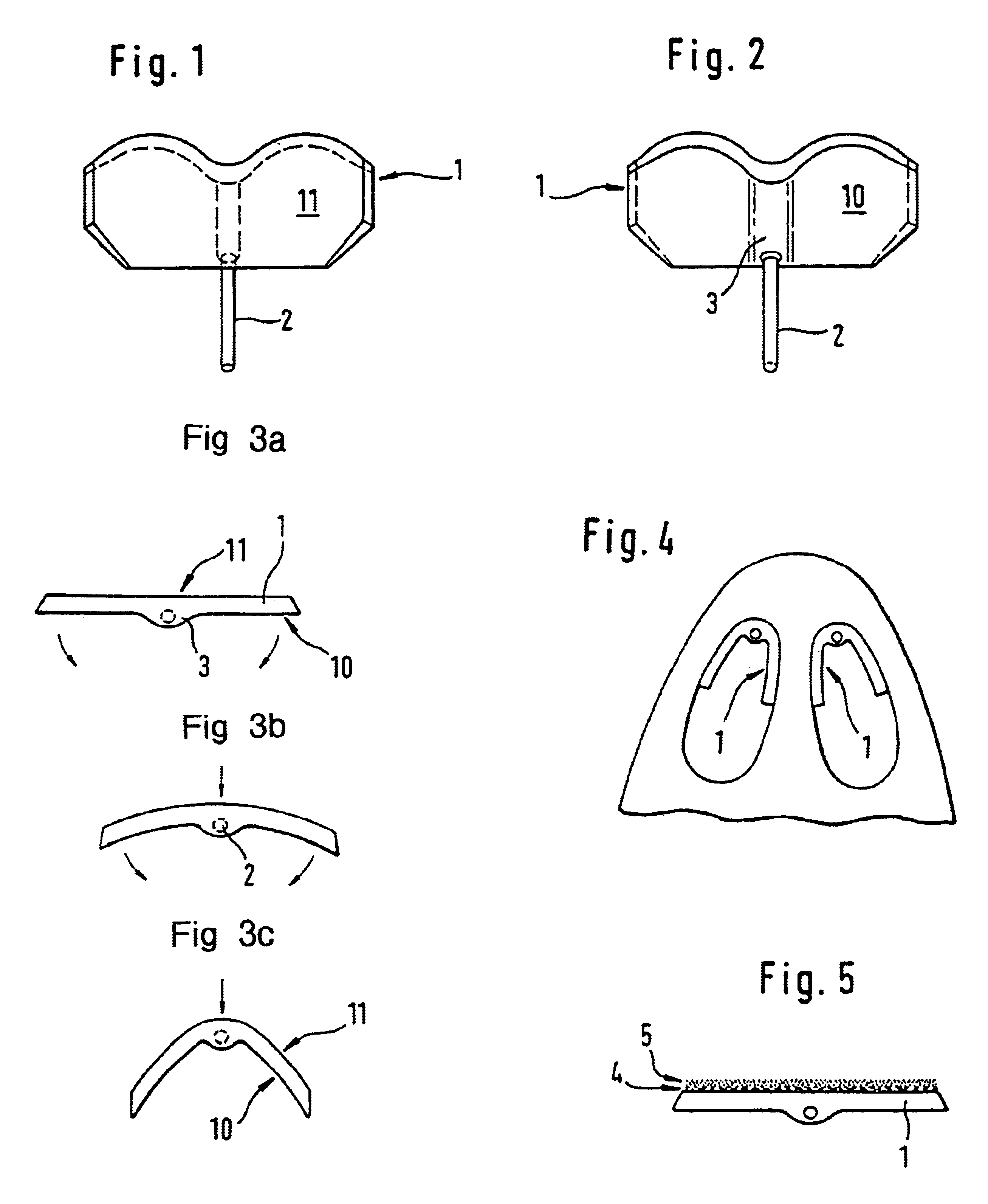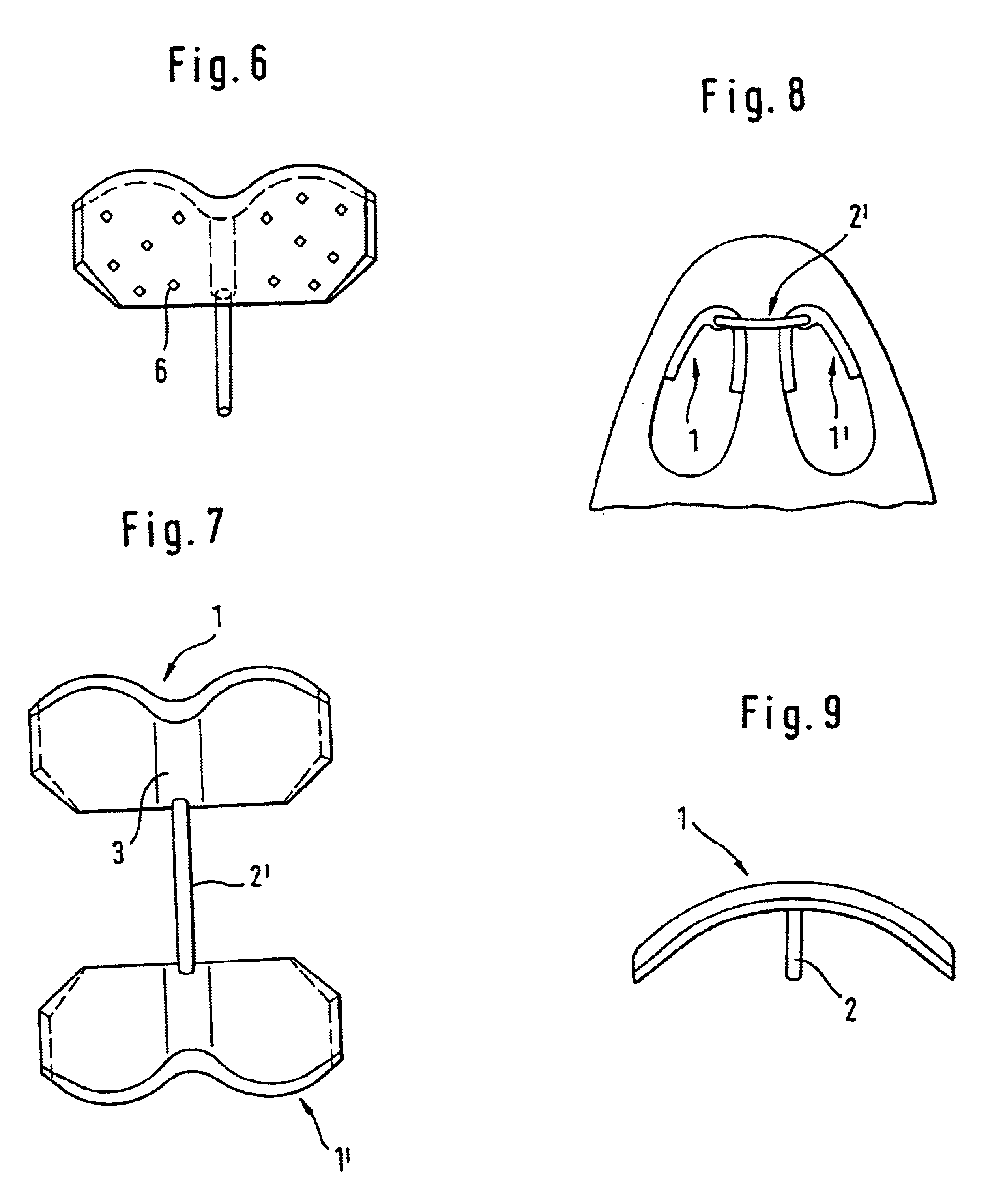Device for insertion into the human nose
a technology for insertion devices and noses, which is applied in the field of insertion devices into the noses of humans, can solve problems such as triggering pronounced allergies, hypersensitivity reactions, and unable to make a statement about clinical relevance of their findings
- Summary
- Abstract
- Description
- Claims
- Application Information
AI Technical Summary
Benefits of technology
Problems solved by technology
Method used
Image
Examples
Embodiment Construction
FIGS. 1 to 6 show the structure of the device of the invention and the way in which it works, wherein it is possible for the device to be used singly, i.e. separately for the left or right nostril in each case, as is shown in FIG. 4, the two devices being identical, or as a single unit comprising two base elements 1 and 1', in which the base elements of the two devices are joined together via a thread-like connecting means 2', for example (FIGS. 7, 8).
FIGS. 1 and 2 show a (flat) plan view from the front and rear of the device respectively, the device being substantially plate-like, the view from above according to FIG. 3(a) showing the substantially constant thickness of the device. The plate-like base element 1 is substantially rectangular or, in a preferred embodiment, shaped slightly like a butterfly, as is shown by FIGS. 1 and 2, and is adapted in shape and size to the conditions of the nasal vestibule (vestibulum nasi) in such a way that it can be firmly positioned therein. Bas...
PUM
 Login to View More
Login to View More Abstract
Description
Claims
Application Information
 Login to View More
Login to View More - R&D
- Intellectual Property
- Life Sciences
- Materials
- Tech Scout
- Unparalleled Data Quality
- Higher Quality Content
- 60% Fewer Hallucinations
Browse by: Latest US Patents, China's latest patents, Technical Efficacy Thesaurus, Application Domain, Technology Topic, Popular Technical Reports.
© 2025 PatSnap. All rights reserved.Legal|Privacy policy|Modern Slavery Act Transparency Statement|Sitemap|About US| Contact US: help@patsnap.com



